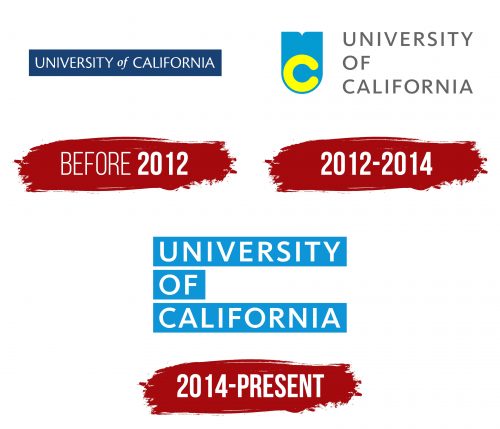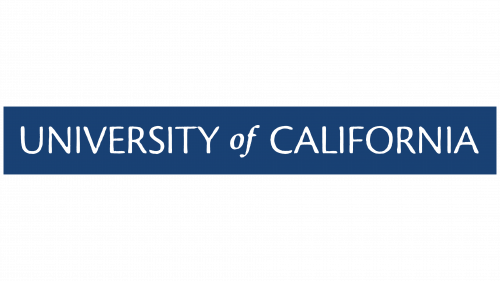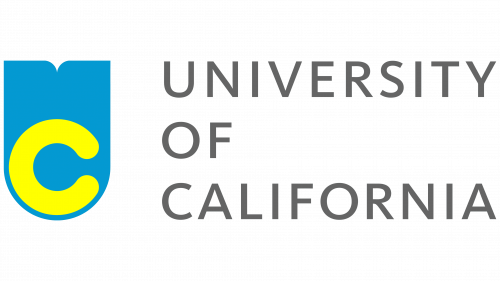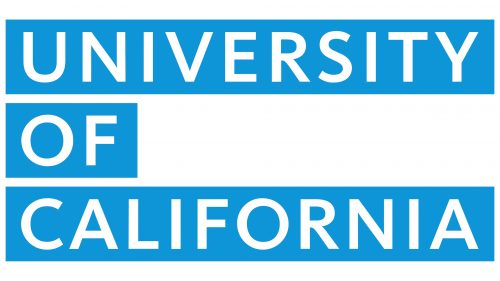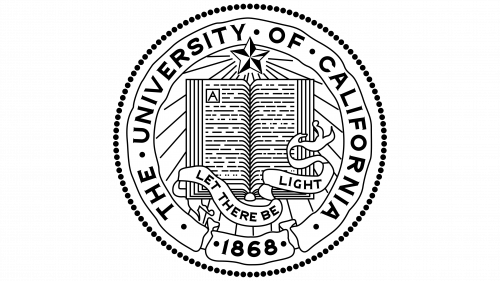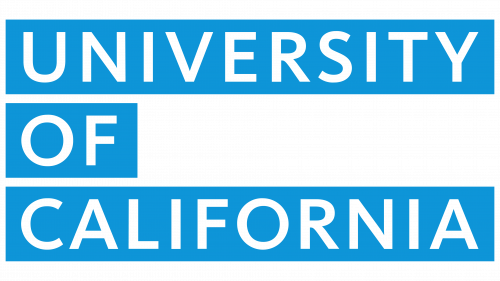 University of California Logo PNG
University of California Logo PNG
The University of California logo rightly cannot be simple. This university has over 250,000 students and holds a unique reputation in the United States and worldwide. Its status as the largest educational institution in the United States makes it special. For these reasons, the best specialists have worked on its identity at different times, incorporating vibrant elements, letters, and images to convey as much meaningful information as possible.
Only three versions of the emblems have been known since 2012. The latest is considered one of the most original and recognizable. Unlike other institutions that often modify their first logo, the University of California has completely changed its identity three times since its founding in 1868.
The modern logo stands out for its conciseness, combining simplicity, rigor, and authority. Two colors are the minimum, but they are enough to represent the institution harmoniously.
The stylish logo features the words “University of California” in large capital letters against a light blue background. The letters are evenly spaced, making the text easy to read, and arranged in three horizontal rows. The blue background consists of three solid and wide lines, creating the impression of geometric shapes or ribbons fluttering in the wind.
University of California: Brand overview
The institution’s history officially began when the University of California’s first campus was founded in Berkeley in 1868. This resulted from the state-run Agricultural, Mining, and Mechanical Arts College merging with the private College of California. The institution’s establishment was intimately linked to the Morrill Act of 1862, which gave states land grants to establish universities focusing on mechanical arts and agriculture. California took advantage of this chance to establish a top-tier university.
The university’s first president, Henry Durant, established the standards for academic achievement and public service that still stand today. During its formative years, UC Berkeley expanded and changed quickly. The institution pioneered equal education, accepting its first female students in 1873.
The university system started to grow in the early 1900s. Los Angeles (UCLA) saw the establishment of the second campus in 1919. Campuses focusing on medical sciences were located in San Francisco (1873), Davis (1908), Riverside (1954), San Diego (1960), Santa Barbara (1944), Santa Cruz (1965), and Irvine (1965) after that. While each campus developed its own focus and distinctive features, they all aimed to provide top-notch research and teaching.
The institution was a major player in defense-related scientific research during World War II. The Manhattan Project involved many instructors and students, demonstrating the university’s importance to the country.
The post-war era was marked by exponential expansion. The GI Bill and California’s population growth brought about a large increase in the number of students, which made expanding and constructing new campuses necessary. Student protests dominated the 1960s, particularly at Berkeley, where the Free Speech Movement gained national prominence. These incidents greatly impacted the university’s culture and stood as a hub for progressive ideas.
The university experienced financial challenges in the 1970s due to decreased state financing and the economic slump. This did not halt its expansion and advancement. The institution increased its research efforts, especially in technology and the natural sciences.
Both computer science and biotechnology grew tremendously in the 1980s. In these domains, UC Berkeley and UCSF rose to prominence. In 1980, Charles Townes, a professor at UC Berkeley, was awarded the Nobel Prize in Physics, which improved the university’s standing even more.
The institution continued expanding its educational offerings throughout the 1990s. UC Merced, the system’s ninth campus, was founded, though it didn’t start accepting students until 2005. Another feature of this era was the student body’s increased diversity.
The new millennium presented both opportunities and challenges. Reduced governmental support for the university resulted in higher tuition, which sparked the search for fresh financing sources and collaborations with the business community.
The Berkeley Earth project, which UC Berkeley started in 2007 to investigate climate change, demonstrated the university’s commitment to tackling global challenges. The decade of the 2010s saw the institution’s global reach grow even more. By expanding the number of exchange programs and foreign research collaborations, the university deepened its connections with academic institutions across the globe.
The advent of the UC Online platform in 2012 marked an advancement in distance education as it provided courses to students from all UC campuses. One of the biggest hubs for brain research worldwide, the UCSF Weill Institute for Neurosciences, opened its doors in 2017.
In 2018, UC Berkeley introduced the “Berkeley Discovery” program to increase undergraduate research opportunities. This move demonstrated the university’s dedication to incorporating research into instruction across all grade levels.
A noteworthy development in quantum computing occurred in 2019. In an announcement celebrating “quantum supremacy,” UC Santa Barbara researchers and Google claimed an advancement in quantum technologies.
In 2020, the institution took a historic stand by eliminating standardized SAT and ACT exams in admissions. This choice broadened student diversity and educational accessibility.
2021 was a year of new scientific discoveries. UC Berkeley’s Jennifer Doudna was awarded the Nobel Prize in Chemistry for creating the CRISPR-Cas9 genome-editing technique, solidifying the university’s leadership in biotechnology.
The new Design and Innovation Center at UC San Diego opened in 2022, emphasizing interdisciplinary study and innovation. This center served as an example of how the institution adjusts to the shifting demands of society and the labor market.
The university system kept adding more options for online learning. With the debut of an upgraded UC Online platform, students on all campuses may now access more courses and programs. The institution gained recognition for its advancements in several scientific and technological domains. Researchers at the university have made great progress in computer technologies, biology, physics, and many other fields.
The institution has encountered several obstacles, such as budgetary constraints and discussing higher education’s accessibility. However, it persisted in changing and growing while staying true to its dedication to public service and high academic standards.
Meaning and History
What is University of California?
UC is a public university system in California, USA. Its campuses, with academic programs and research opportunities, are spread across the state. The system includes world-class universities such as the UC at Berkeley, the UC at Los Angeles, and the UC at San Diego. The UC system is renowned for its commitment to cutting-edge research, public education, and a diverse student body. It offers a wide range of professional, master’s, and undergraduate programs in various fields of study.
Before 2012
The first logo brought significant recognition and popularity to the university. It became the symbol of an organization consisting of 10 campuses. A blue background, resembling a rectangle, served as the foundation for the university’s name. The white letters on this background appeared elegant and formal. The logo was simple but used a technique to capture attention: the word “of” was written in italics, while all the other letters were proportional.
The logo appeared reserved and reflected the institution’s high status. The colors emphasized the power of knowledge, and the simplicity proved appropriate and effective.
2012 – 2014
In 2012, the University of California’s identity underwent significant changes. The logo now includes four colors. Previously, it contained only text and background, but now an interesting image and a bright letter “C” have been added, altering the overall perception.
The institution’s name is placed on the right side of the logo, written in large gray letters on a white background. A beautiful light blue element stands out on the left. For many, this might resemble a square or rectangle with an irregular shape and a rounded element, perceived as a flag or shield. A bright letter “C” is placed on it. The logo reflects the leading educational center’s conservative nature while incorporating creative elements highlighting progress, excellent results, and success.
2014 – today
Since 2014, the University of California’s identity has undergone significant transformation. The logo became simpler while remaining very clear and informative. The university’s name is written in white letters on a blue background. This concise design symbolizes the high status of the institution, which employs over 2,000 faculty members. The logo’s simplicity emphasizes the authority and importance of the university, making it easily recognizable and memorable.
The Seal
Interestingly, while the University of California’s logos changed, its unique seal remained unchanged for 144 years. This symbol was used to identify the university at competitions and academic events. The complex seal in graphics and information was very noticeable and memorable. At its center was an open book with text on both pages, symbolizing knowledge and education.
Above the book was a five-pointed star drawn in a light-dark tone. The emblem featured three textual elements: the founding date, the motto “Let there be light!” and the institution’s name. Each was placed in a specific location, emphasizing the importance of every letter and word. Three outline frames, one ribbon, and 15 rays extending downward from the star were used to draw attention to the seal.
